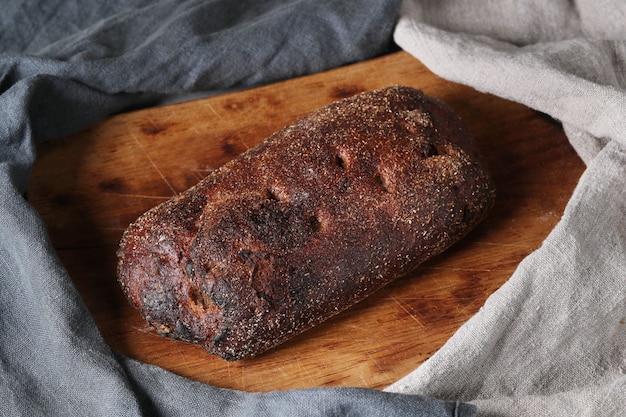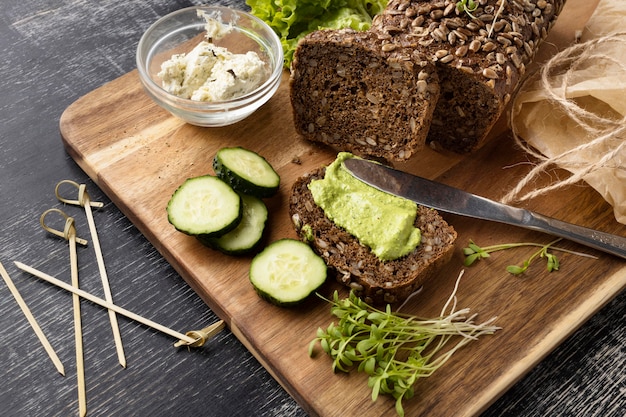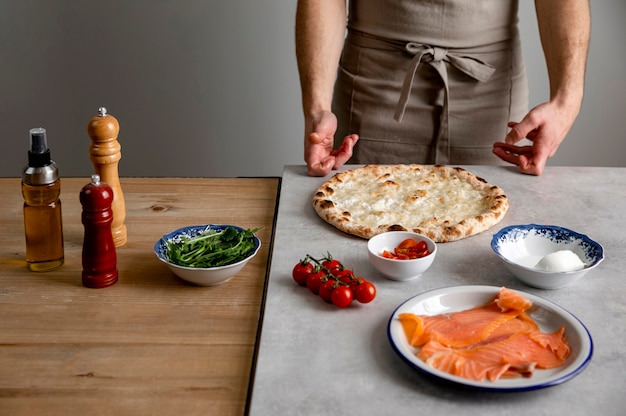Let’s face it, meatloaf is a classic for a reason. It's hearty, versatile, and perfect for a comforting Sunday dinner, a casual weeknight meal, or even a picnic. But figuring out the right cooking time can be a bit of a puzzle, especially if you're not a seasoned meatloaf maker. Well, fear not, my friends! I'm here to share my tried-and-true guide to mastering meatloaf cooking time, with tips, tricks, and a few personal anecdotes thrown in for good measure.
(Part 1) Setting the Stage: The Meatloaf Essentials

Before we dive into the oven, let's get those essential meatloaf basics down. Think of it like prepping your kitchen for a culinary masterpiece! Here’s what we need to consider:
1. meatloaf size: The Big Picture
The size of your meatloaf, my friends, is the single biggest factor determining its cooking time. A petite loaf, like a 1lb (450g) beauty, will cook much faster than a hefty 2lb (900g) behemoth. You need to make sure that glorious heat reaches the center of your meatloaf, ensuring it's cooked through without being dry or underdone.
2. Oven Temperature: The Goldilocks Zone
When it comes to oven temperature, I'm a fan of the moderate approach – think 350°F (175°C). This provides a gentle, even heat that cooks the loaf thoroughly without scorching the exterior. But hey, I've been known to tinker with temperatures, and sometimes, a slightly higher heat can actually speed up the process.
3. meatloaf ingredients: A Flavorful Journey
Don't forget about the ingredients themselves! If your meatloaf is brimming with vegetables or a generous helping of breadcrumbs, it might take a tad longer to cook through. You'll want to keep a watchful eye to ensure it doesn't dry out and maintain its juicy, delicious heart.
(Part 2) Meatloaf Cooking Times: A Rough Guide

Alright, let's get down to brass tacks. There's no magic number for meatloaf cooking time, but I've got some tried-and-true guidelines that'll give you a great starting point.
Table: Approximate Meatloaf Cooking Times
Remember, these are just ballpark estimates – every oven and meatloaf is a little different.
| Weight of Meatloaf | Cooking Time |
|---|---|
| 1lb (450g) | 45-55 minutes |
| 1.5lb (680g) | 55-65 minutes |
| 2lb (900g) | 65-75 minutes |
| 2.5lb (1.1kg) | 75-85 minutes |
Trust me, there's nothing worse than biting into a raw center, so always check for doneness. I'll tell you how to do that in a bit!
(Part 3) The Doneness Detectives: Checking for Perfection

Here's the deal: we want that beautiful, golden-brown crust and a perfectly cooked interior. The best way to achieve that is to become a doneness detective! There are a few methods, but my personal favorite is using a trusty meat thermometer.
1. The Meat Thermometer: A Kitchen Hero
A good meat thermometer is your best friend in the kitchen. It's quick, accurate, and takes the guesswork out of whether your meatloaf is cooked through. Aim for an internal temperature of 160°F (71°C) – that’s the magic number for safe and delicious meatloaf. Check the temperature in a couple of spots – the thickest part of the loaf and the center. If both readings are at 160°F (71°C) or higher, you’re in the clear.
2. Other Methods: A Bit Less Reliable
If you're thermometer-less, there are alternative methods, though they're not as foolproof.
- The Touch Test: Press the center of the meatloaf with a finger. It should feel firm, not jiggly. But this method isn’t always reliable. The center could still be undercooked.
- The Visual Check: The meatloaf should have a lovely brown crust, and the juices should run clear, not pink. Again, not always the most accurate.
My advice? Always err on the side of caution and use a meat thermometer. You’ll thank me later for it!
(Part 4) Meatloaf Mishaps: Rescue Missions
So, you’ve checked your meatloaf, and it’s not quite cooked through. Don’t despair! We've all been there. Here's how to rescue your meatloaf from a culinary crisis.
Don't Overcook It!
Overcooking can lead to a dry, tough meatloaf that's no fun at all. Be patient. Give it a little more time in the oven. You can increase the oven temperature slightly, or pop it under the broiler for a few minutes to get that beautiful crust. Just keep a close eye on it and make sure it doesn't burn.
(Part 5) Meatloaf Mastery: Tips and Tricks
Now that we've tackled the basics, let's dive into some pro tips and tricks to make your meatloaf even more irresistible.
1. meatloaf shape: Round or Oval?
The shape of your meatloaf can influence its cooking time. A round loaf tends to cook more evenly than a long, thin one. I'm a big fan of shaping mine into a loaf pan or a round baking dish for optimal results. Just make sure it's not packed too tightly, allowing some space for air circulation.
2. Glazes and Toppings: A Flavor Boost
Don’t forget the finishing touches! A simple glaze of ketchup and brown sugar can add a touch of sweetness and a lovely sheen. Or, get adventurous with a savory mushroom gravy or a herbed butter sauce. Add your glaze or topping in the last 15-20 minutes of cooking time – it helps keep the loaf moist and adds a burst of flavor.
(Part 6) meatloaf variations: Beyond the Ordinary
Let's face it, meatloaf doesn't have to be boring. There's a whole world of flavor possibilities to explore!
1. Meat Choices: Beef, Pork, Lamb, or a Blend?
You can use any kind of ground meat for your meatloaf. I love a good beef meatloaf, but pork, lamb, or even a mix of different meats can create unique flavor combinations. Just adjust the cooking time based on the type of meat – pork, for instance, needs a slightly shorter cooking time than beef.
2. Veggie Power: Adding Some Crunch
Want to add some healthy goodness and extra texture? Chop up carrots, onions, celery, or mushrooms and mix them into your meatloaf mixture. Just make sure to cook them down a little first to prevent them from being too raw in the final dish.
3. Cheesy Delight: A Melty Centerpiece
Cheese is a must-have in any good meatloaf! Grate some cheddar, mozzarella, or your favorite cheese and mix it into the meatloaf mixture. Or, add a layer of cheese on top before baking. The cheese will melt and create a gooey, delicious center.
(Part 7) Serving Your Masterpiece: A Culinary Feast
Your meatloaf is cooked to perfection. Now, it’s time to celebrate! Here are some ideas for serving up this culinary masterpiece.
1. Classic Sides: A Comforting Companion
You can't go wrong with some traditional sides like mashed potatoes, gravy, and green beans. These sides complement the meatloaf perfectly and create a hearty, satisfying meal.
2. Light and Fresh: A Salad Side
For a lighter option, serve your meatloaf with a fresh salad. You can also slice it up and use it in sandwiches, wraps, or even on a burger bun. Meatloaf is incredibly versatile!
3. Leftover Magic: A Second Helping of Delight
Meatloaf is even better the next day! Reheat it in the oven or microwave and enjoy it on a sandwich, or try it with some roasted vegetables. It’s a real crowd-pleaser!
(Part 8) meatloaf faqs: Answering Your Questions
Okay, let's tackle those common meatloaf questions that might be brewing in your mind.
Q1: Can I cook a meatloaf in a slow cooker?
Absolutely! Slow cookers are fantastic for meatloaf. Just check the cooking time for your specific model. I usually cook a meatloaf in a slow cooker on low for 6-8 hours, but it can vary depending on the size of the loaf.
Q2: What if my meatloaf is too dry?
We’ve all been there! You can try adding more liquid to your meatloaf mixture, like milk, broth, or even tomato juice. Or, make a delicious glaze and drizzle it over the meatloaf before baking.
Q3: Can I freeze meatloaf?
You bet! Meatloaf freezes beautifully. Just make sure it’s cooled completely before freezing. Wrap it tightly in plastic wrap and then aluminum foil. To reheat, thaw the meatloaf in the refrigerator overnight and then bake it at 350°F (175°C) until it's heated through.
Q4: What can I do with leftover meatloaf?
Leftover meatloaf is a treasure! Slice it up and serve it on sandwiches or burgers. You can also dice it and use it in soups, stews, or pasta dishes. The possibilities are endless!
Q5: Can I cook meatloaf in the instant pot?
It's possible, but not ideal. The Instant Pot excels at dishes that need steam, like stews and soups. Meatloaf needs dry heat to cook evenly. If you're determined to try it in the Instant Pot, use the manual setting and adjust the cooking time based on your specific model.
There you have it! My ultimate guide to meatloaf cooking time. I hope this has helped you conquer the art of meatloaf and create something truly delicious. So, grab your aprons, gather your ingredients, and let’s get cooking!
Everyone is watching

Prime Rib Roast Cooking Time Chart: Per Pound Guide
Cooking TipsPrime rib roast. Just the name conjures images of lavish dinners, crackling fires, and hearty laughter. It’s ...

How Long to Bake Potatoes in the Oven (Perfect Every Time)
Cooking TipsBaked potatoes are a staple in my kitchen. They're incredibly versatile, delicious, and surprisingly easy to m...

Perfect Rice Every Time: The Ultimate Guide to Cooking Rice
Cooking TipsAs a self-proclaimed foodie, I've always been a bit obsessed with rice. It's the foundation of countless cuisi...

The Ultimate Guide to Cooking Asparagus: Tips, Techniques, and Recipes
Cooking TipsAsparagus. The mere mention of this spring delicacy conjures up images of vibrant green spears, crisp and burs...

Ultimate Guide to Cooking the Perfect Thanksgiving Turkey
Cooking TipsThanksgiving. Just the word conjures up images of overflowing tables laden with delicious food, the scent of r...
